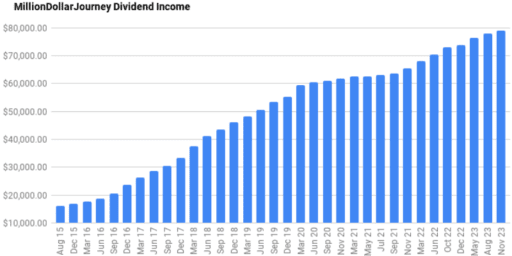In-Kind Transfers of Non-Registered Stocks to an RRSP/TFSA
I’m a bit late getting to this reader question as the RRSP deadline was at the beginning of this month (March 1, 2010), however, this can apply to the current tax year. The question relates to the tax implications of transferring stock in-kind to an RRSP or a TFSA.
Say Mr. Investor has stock in his non-registered portfolio, but he hasn’t made any RRSP contributions for the year. If Mr. Investor is in a higher tax bracket, it may make sense to transfer the stock to his RRSP and claim the RRSP contribution as a tax deduction at the end of the year.
Capital Gains
While he may get a tax deduction for his RRSP contribution, there are other tax implications to be aware of. If there is a capital gain in the stock being transferred from a non-registered account, there will be capital gains tax owed at the end of the year. That is, 50% of the profit will be taxed at your marginal tax rate.
Capital Losses
What if the stock being transferred is at a loss? Typically, when stocks are sold at a loss within a non-registered portfolio, a capital loss can be claimed against capital gains. However, an in-kind transfer to a registered account cannot claim a capital loss.
So how do we get around this? Simply sell the stock to capture the capital loss, then deposit the cash into the registered account. Note though, if you sell a stock for a capital loss, the superficial loss rules state that you’ll have to wait 30 days before repurchasing the same stock again.
These rules, as far as I know, apply to in-kind transfers to both an RRSP or TFSA.
When does it make sense to transfer?
For me, I like to be as tax efficient as possible. I would consider an in-kind transfer from my non-registered account if I was in a high tax bracket and/or if it was simply more tax efficient to hold the stock in a tax sheltered account.
For example, if I held a US dividend stock in a non-registered account (US dividends are taxed as income), then it may make sense to consider sheltering the US dividend income within an RRSP. Even if there are capital gains in the transfer, the RRSP contribution tax deduction should more than cover it. However, if I was considering transferring to a TFSA, since contributions do not get a tax deduction, I would hesitate to transfer any stock with significant gains.
Have you made an in-kind stock transfer before? What was your rationale?
I've Completed My Million Dollar Journey. Let Me Guide You Through Yours!
Sign up below to get a copy of our free eBook: Can I Retire Yet?










I wonder if my question got posted. So I want to repeat.
I have stocks in a RRSP account and I want do in kind transfer to a TFSA account. I was told to open a non REGISTERED account as an intermediary where RRSP stock will go first. Then a transfer in kind can be done from this intermediary to TFSA. Is it true that there will no withholding tax for this but reporting it as income in your tax return filing and pay the amount then calculated since I am retired and in a lower bracket.
I don’t want to participate in a RIFF where I lose control of the money. I am 65 and I wish to avoid it.
Regarding in-kind transfers (moving stocks from non-registered to a registered acct) – Could anyone explain why we have to pay capital gains but we cannot claim a capital loss? Is there a logic to that?
I’m just curious as to why we pay a capital gain but cannot similarly take a loss.
Thanks.
Another reason would be to avoid triggering a DSC fees.
You are responsible for paying capital gain tax on those shares. Transferring them to your TFSA counts as “selling” them for tax purposes.
If this were not the case, there would be a huge tax loophool where people could get out of paying capital gain tax by transferring shares to a TFSA for selling.
I have transferred 1000 shares ($1000 value) from my trading account IN KIND to my TFSA. No shares were sold or bought and no fees were charged. I remain well under the $5000\year max. I was told by reputable people at that time that there were no tax implications involved in a transaction like this. Now I am being told that this transaction must be reported on my annual return of income. As nothing was bought or sold, what (and where) is it that needs to be reported ? Could you assist please?
Kazmifar: I’m afraid it doesn’t make sense. You can’t compare unreg dollars to RRSP dollars.
Let me simplify your scenario to help you see the problem: Add $1000 to your RRSP; this gives you say a $400 refund. Total cost to have $1000 in your RRSP is $600. 66% profit??? When you take out the $1000, $400 goes to the taxman and you have your original $600 again. No profit. :(
I have a question. Or rather, a scenario that i’m curious to see if it makes any sense.
Say I took out a loan for $5000 from the bank to invest in a non-registered portfolio. Assuming that I invest in stocks that yield a dividend, and the stocks go up in price by 10%, let’s say that in one year my portfolio is upto $5700 (including dividends).
In the mean time, i’ve been slowly paying off the loan at $250/month which equals approximately $2800 off the principle in one year, including any interest that i’ve been also paying.
If I now that these funds and deposit it in a RRSP, thus reducing my taxable income, I estimate that I would get back approximately $1800 back from the government (after paying capital gains tax and dividend tax, not to mention, write off the interest I paid for investing in a non-reg portfolio) which I could then use to pay off most of the loan.
My question is, does this scenario make sense? If it does, wouldn’t that mean that I effectively made a profit of about 55% ($3200 in P&I payments plus $1800 from the government)?
I did this once when the company for which I worked allowed me to purchase stocks in a very favourable stock purchase plan. They were a US company but didn’t pay much in the way of dividends.
I wonder if we are able to do this with real estate?
Braiden Harvey
Yes, I am considering doing “Norbert’s Gambit” in my taxable account to skip the forex fee, and buy some USD money market fund. Then transfer in kind into RRSP for tax efficiency, then wash the USD money market into whatever USD equities I’m interested (currently, only plain vanilla VTI).
Sounds workable?